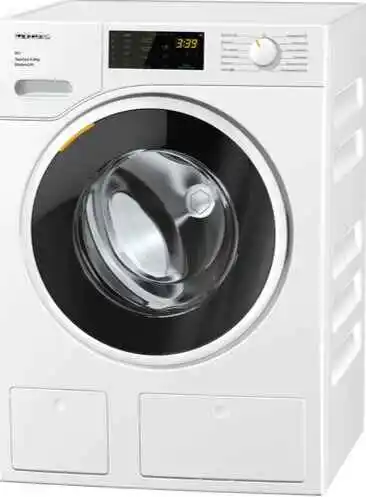Miele PWM 507 Hygiene Special Washer Manual: Installation Planning
Miele PWM 507 Hygiene Special Washer Manual serves as an essential resource for professionals seeking precision, safety, and efficiency in hygiene-critical settings. Specifically developed for sectors like healthcare, clinical labs, and aged care, the PWM 507 integrates advanced washing protocols with medical-grade disinfection features.
This manual walks through every technical and functional aspect of installation—covering drainage systems, electrical setup, space requirements, and ventilation guidelines. Its robust construction and smart programming ensure compliance with stringent cleanliness benchmarks, while optimizing energy and water consumption.
Each section of the guide has been designed to help users configure the appliance for peak operational output and minimal maintenance downtime. Relying on this manual during setup not only enhances performance but also safeguards long-term reliability in sensitive environments.
Miele PWM 507 Installation Planning
Efficient installation of the Miele PWM 507 Washer is essential for ensuring long-term performance, hygiene compliance, and operational safety. Whether installed in a medical facility, laboratory, or commercial laundry, the planning phase must follow strict engineering protocols.
Attention to electrical load capacity, water supply conditions, drainage infrastructure, and local regulatory standards forms the backbone of a successful installation. A properly executed setup reduces maintenance downtime, enhances wash quality, and extends equipment lifespan.
This section outlines core requirements—including electrical connections, site conditions, and plumbing configurations—based on Miele’s specifications and professional installation best practices.
Electrical Infrastructure and Safety Compliance
For seamless performance, the washer must be connected to a power supply that meets both national electrical codes and workplace safety regulations.
The installation should be carried out by a licensed electrician who understands both load balancing and circuit protection protocols.
The appliance supports either plug-and-socket or hard-wired connections, with a strong preference for the former to simplify routine service checks.
When hard-wired, an all-pole isolator with a 3 mm contact gap is mandatory. Easily accessible disconnects are vital for operational safety. Fuse ratings and power draw specifications are listed on the washer’s data plate and must be carefully cross-checked before connection.
Transportation and Access Considerations
Before the unit reaches its designated space, secure transport procedures must be followed. The washer should never be moved without transit bars properly installed, as internal components risk damage from vibration. Transit bars must be preserved for any future relocations.
Additionally, access paths—from delivery entry to final installation site—should be measured in advance to ensure the appliance can pass through doorways and corners without obstruction. Facilities with sound sensitivity, such as healthcare centers, may require additional vibration control or acoustic isolation measures.
Water Supply and Pressure Regulations
Connection to the cold and hot water systems must meet local plumbing codes and hygiene standards. Both inlets require hoses with threaded unions, and the cold water line must be fitted with a non-return valve to prevent backflow contamination.
In cases where hot water is not available, the secondary inlet can be connected to a cold source or blocked using the included blind stopper. Each connection must be performed by a qualified plumber, ensuring correct water pressure levels and sealing integrity. Miele provides extended hose options if needed for custom installations.
Drainage Solutions and Site Configuration
Drainage setup varies by model, with options including a motorized drain valve or a built-in drain pump. A properly vented drainage path is non-negotiable to prevent back-pressure and ensure efficient wastewater removal.
Where multiple machines share a drainage line, the system must be dimensioned to handle simultaneous discharge without backup. Pumped models require a smooth, unobstructed hose route with a maximum delivery head of one meter.
Connection options include trapped waste pipes, floor drains with odor traps, or direct discharge into laundry trough systems. In sensitive environments, Miele’s optional venting kit offers additional flexibility.
Source: whichwasher2007/You Tube
General:

Brand | Miele |
Model | PWM 507 |
Product | Washing Machine |
Language | English |
FileType | Manual PDF |
File Size | 700 KB – (11 – Pages) |
Frequently Asked Questions (FAQs)
Manual
This model falls under the category of washing machines. You’re free to download the User Manual PDF without any cost. This manual is available in English.
Do you have any questions regarding this model (PWM 507)? Go directly to the support option in the header. I will provide the information within 12 hours.
